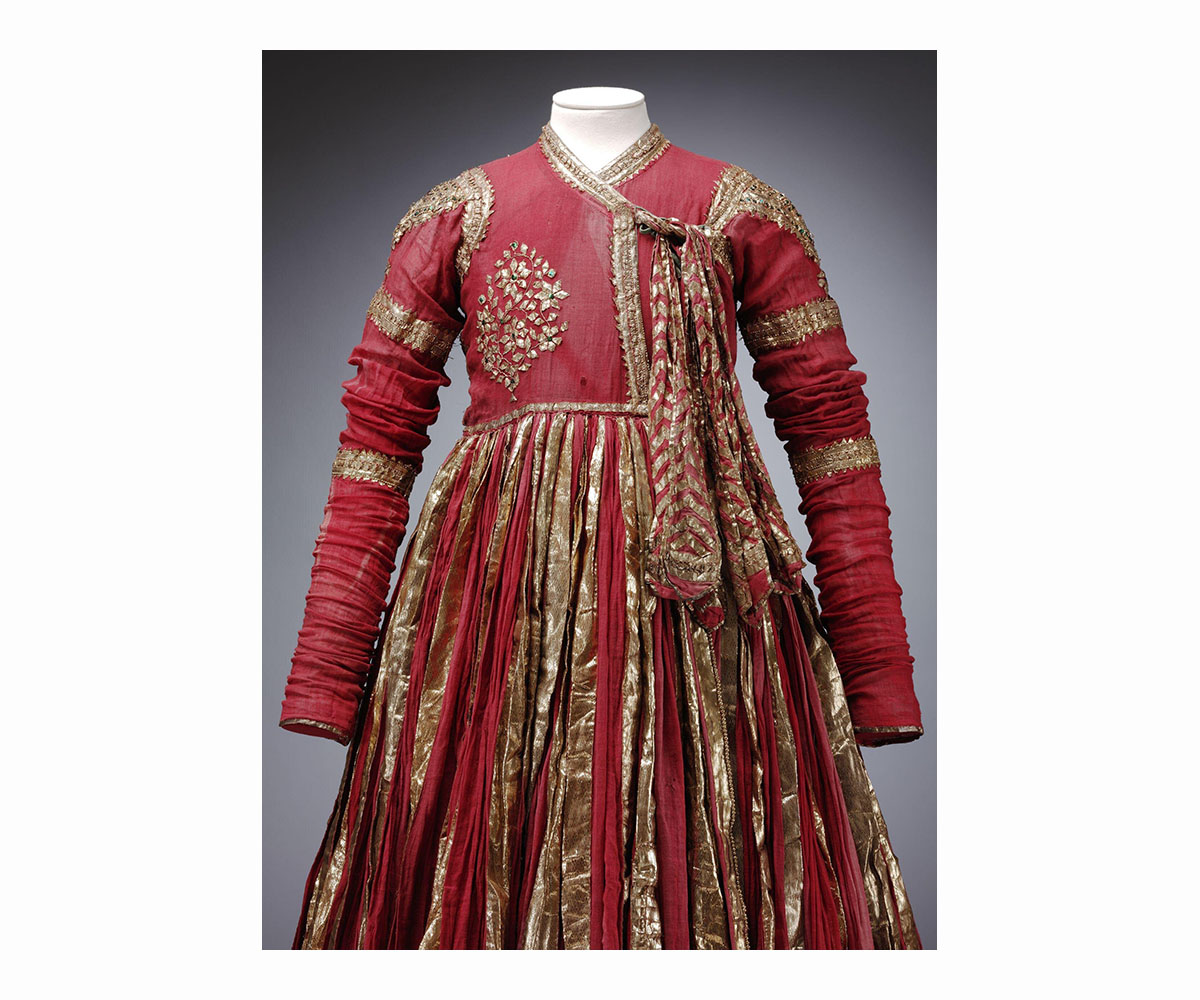ARTICLE
Jama
A loose-fitting open-front tunic with a flared skirt and tied on the side with tassels underneath either of the armpits, is called a jama. Turko-Persianate in its origins, it is associated with the Mughal court where it became a prominent outfit. It was usually worn as an upper garment over a shirt with a pyjama below.
Even as it features in a large number in Mughal and Rajput paintings and finds mention in chronicles of the Mughal court, travellers’ accounts and ethnographic records by the British, the point of its genesis in India is unknown. The word jama had wide usage and meant several things besides the outfit it came to represent. It became a popular garment from the sixteenth century onwards, but much debate surrounds the form that prefigured it, or the style that it emerges from. It is believed that the takauchiya coat, which was native to India, had its slits in its skirts removed on the orders of Akbar, thereby producing the full-skirted chakdar jama. Akbar also named the jama, in the local language, as sarabgati, literally meaning “that which covers the whole body”, as part of his programme to synthesise Hindu and Islamic customs and social life. Some scholars have also gone as far back as the rule of Kushanas to trace the presence of the jama in the Indian subcontinent. The yaktahijama (unlined jama) is understood to have been brought to the region from Central Asia by the Kushana dynasty in the second century. Evidence is found on Gandharan sculptures, Gupta coins, and the murals painted in the caves of the Ajanta and Bagh.
The jama was adapted to the Indian climate. Used unlike a coat, it had a lighter fabric, while its length and flare underwent several transformations on the whims of rulers and changing fashions. The jama and its variants such as the angarakha and baga became formal articles of the court. By the nineteenth century, the angarakha became more prominent as Mughal imperial control diminished, and the cultural centre shifted to the court of Nawab of Awadh, and in the Deccan, it was replaced by the sherwani. At the same time, the silhouettes became more streamlined and garments such as achkans, sherwanis, and chapkans took precedence.
Bibliography
Our website is currently undergoing maintenance and re-design, due to which we have had to take down some of our bibliographies. While these will be re-published shortly, you can request references for specific articles by writing to hellomapacademy@map-india.org.









